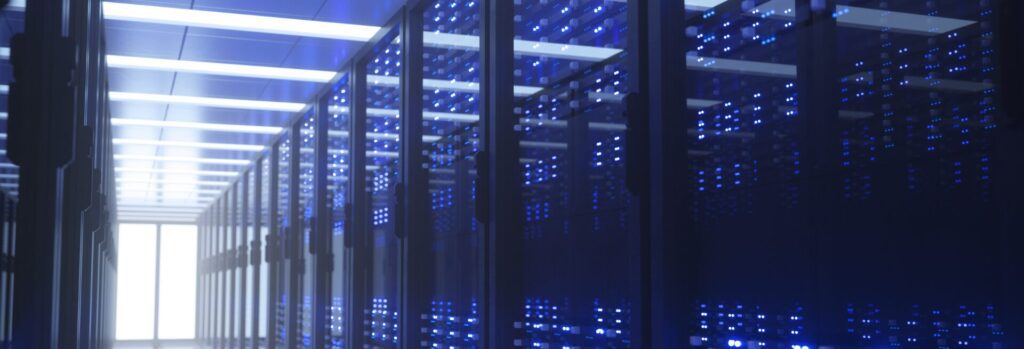Industry 4.0: Digital Transformation in Manufacturing
The Industry 4.0 represents a blend of two industries: information technology and manufacturing. ...

In today’s digital age, big data centers are the backbone of our information-driven society. They power the internet, cloud computing, and countless online services. However, the colossal energy consumption of big data centers raises concerns about their environmental impact, particularly in terms of carbon emissions. This article explores the substantial carbon footprint of data centers and highlights innovative solutions aimed at mitigating their environmental impact.
Data centers are energy-intensive facilities that house and process vast amounts of data. Their demand for electricity is insatiable, and this hunger for power comes at a significant environmental cost. The primary contributors to data centers’ carbon emissions include:
Energy Consumption: The energy required to power servers, cooling systems, and infrastructure contributes significantly to carbon emissions. In 2019, data centers consumed an estimated 1% of global electricity, releasing 2% of worldwide carbon emissions.
Cooling Requirements: Data centers generate substantial heat, necessitating powerful cooling systems that consume additional electricity. These systems often use fossil fuels, further exacerbating emissions.
Redundancy: Data centers are designed for uninterrupted operation, which involves redundancy in power supply and cooling systems. This redundancy, while essential for reliability, also increases energy consumption.
However, some companies are working toward developing innovative solutions for mitigating the impact these necessary infrastructures have on the environment. Such solutions may include developing energy efficient data centers revolving around advanced cooling techniques, server virtualization and intelligent management systems.

Regarding the advancement of cooling techniques, the latest innovations were based on liquid cooling. Especially, immersed server in a non-conductive fluid are gaining traction. These non-conductive fluid, also known as insulating fluids, are substances that do not conduct electricity by having high electrical resistance and do not allow the flow of electric charge through them. Some example of such fluids include, mineral oil, silicone oil, dielectric liquids and Polyethylene Glycol (PEG) or perfluorinated fluids. The use of these fluids are more energy-efficient than traditional air cooling methods and can help reduce emissions.
Other aspects of developments are targeting edge computing. The implementation of edge computing, that brings computational processing closer to the data source or “edge” of a network, rather than relying solely on centralized data centers or cloud services. In edge computing, data is processed locally on devices or at nearby edge servers, reducing the need to transmit data over long distances to centralized data centers for processing. This approach offers several advantages, particularly in terms of reduced latency, improved real-time decision-making, and enhanced data privacy and security. These methods can be used in order to reduce the need for extensive data center infrastructure and decrease energy consumption.
Data centers produce a significant amount of waste heat. Innovative solutions can capture and repurpose this heat for heating buildings or generating additional electricity, reducing overall emissions. Waste heat recovery (WHR) is a process of capturing and reusing heat that is generated as a byproduct of various industrial processes or even everyday activities. The goal of WHR is to harness this otherwise wasted heat energy and convert it into useful forms of energy, such as electricity or thermal energy, to improve overall energy efficiency and reduce environmental impact. Here are some common methods and technologies used for waste heat recovery: Heat Exchangers, Thermoelectric Generators (TEGs) or Organic Rankine Cycle (ORC) Systems.
Data centers are indispensable in our digital world, but their carbon emissions pose a significant environmental challenge. Innovative solutions, driven by both technological advancements and sustainability commitments, are emerging to address this issue. By adopting renewable energy sources, improving energy efficiency, and exploring cutting-edge cooling and computing techniques, the data center industry is making strides towards a more sustainable and eco-friendly future. As consumers and businesses alike become more conscientious about their environmental impact, these innovations are crucial steps in the journey to reduce the carbon footprint of data centers and ensure a sustainable digital future.
Companies that are innovating in this sector are likely to be eligible for several funding programs including government grants, and SR&ED.
Want to learn about funding opportunities for your project? Schedule a free consultation with one of our experts today!
Sources :
https://datacampus.fr/immersion-cooling/
https://greenly.earth/fr-fr/blog/actualites-ecologie/quelle-est-l-empreinte-carbone-d-un-data-center
Explore our latest insights
More arrow_forward
The Industry 4.0 represents a blend of two industries: information technology and manufacturing. ...

Provincial governments are slowly unveiling their provincial budgets outlining fiscal strategies ...

Recently, Canadian representatives attended COP27 to discuss the actionable steps to implement to...

Human-Machine Collaboration has become an essential part of the manufacturing industry. This coll...